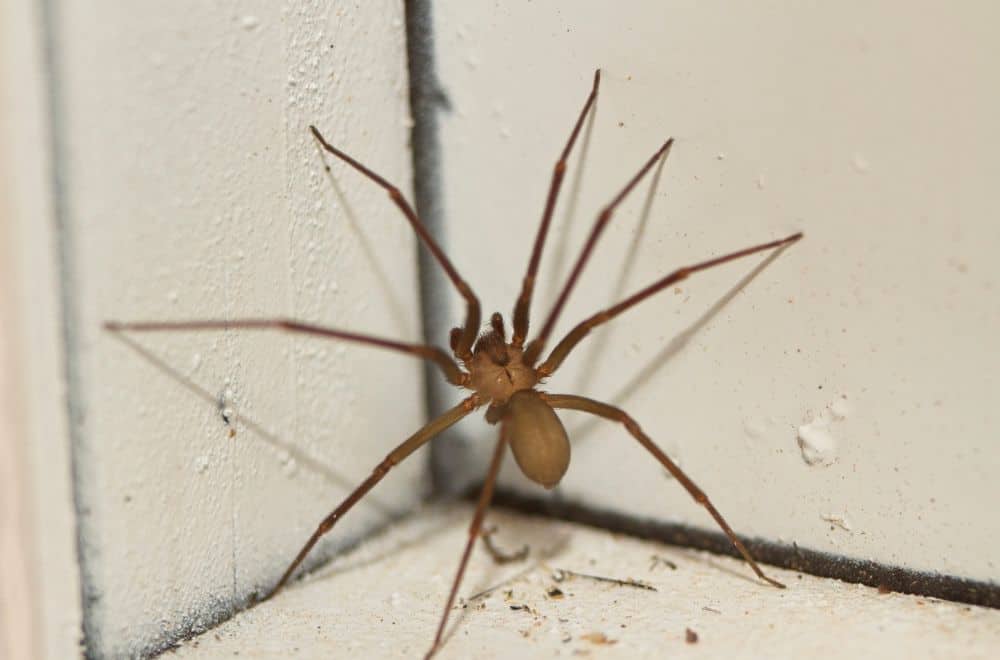Many types of pests can invade our homes, but few elicit such reactions of aversion or even horror as spiders.
Generally speaking, most spider species in the US are harmless and are nothing to worry about – but to help you identify some of those you’re most likely to encounter, in this post we talk about the most common types of brown spiders in the house.
Different types of common brown spiders in the US
In the US, there are thought to be at least 3,000 species of spider. However, if you are seeing brown spiders in your home, they’re likely to belong to one of only a handful of common species – and of these, very few are considered dangerous.
So now let’s have a look at the species of brown spider you’re most likely to encounter in your home.
1. American house spider
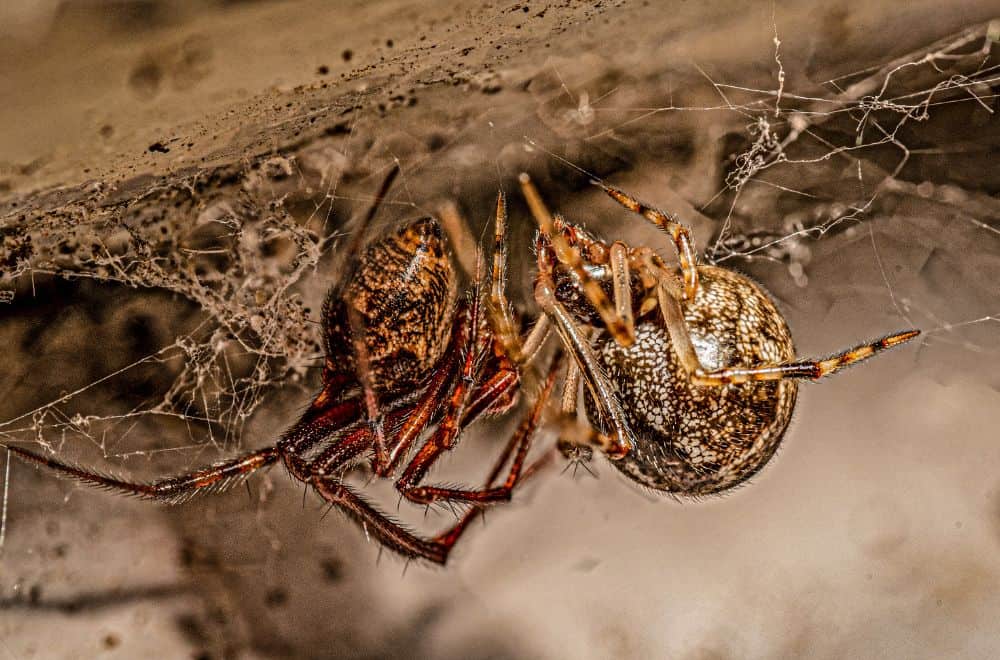
The name of this species tells you a lot of what you need to know – these spiders are common, and you will often see them in your home.
Known scientifically as Parasteatoda tepidariorum, they like to occupy human habitations, and if you notice untidy, ragged webs appearing in your house, these spiders are likely to be responsible.
Their color varies from brown or tan to black, and they are small spiders, with bodies measuring only about 0.2 and 0.24 inches for females and 0.15 and 0.19 inches for males.
They feed on household pests like flies, mosquitoes and ants – and sometimes take even bigger prey such as grasshoppers – so it’s not always a bad thing to have a few of these spiders in your home.
They usually stay hidden in dark corners in places like cabinets and closets, under stairs, in basements and in garages.
They’re also completely harmless, so although their webs may be a nuisance, you have nothing to fear from these spiders.
2. Cupboard spider
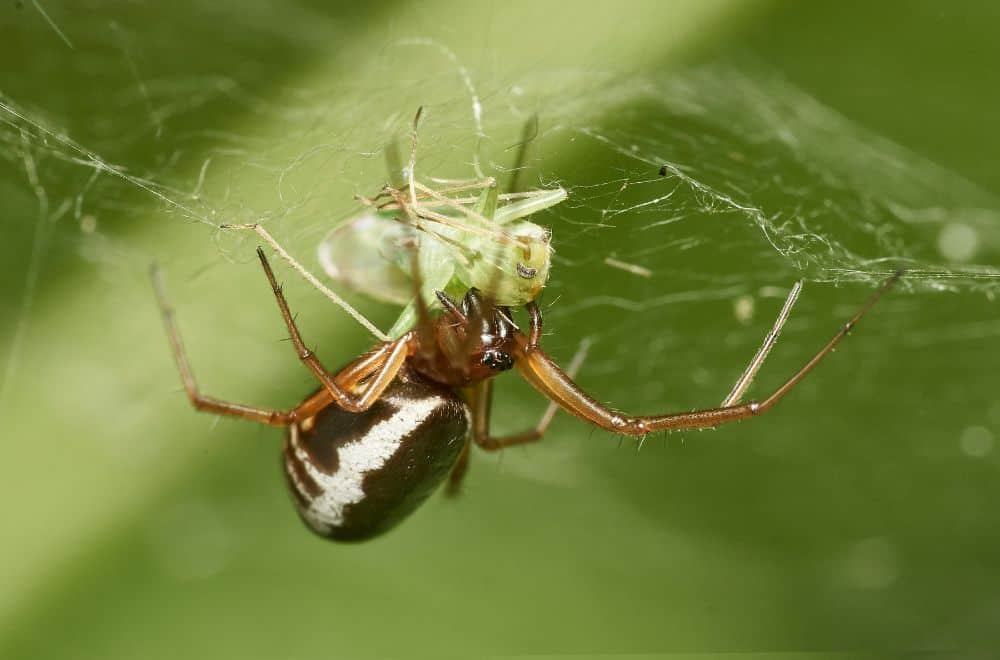
The cupboard spider, known scientifically as Steatoda grossa, is also sometimes called the dark comb-footed spider – and is referred to as the brown house spider in Australia.
The species is present throughout most of the US, including on all three coasts, as well as throughout many parts of the rest of the world.
They are around 0.25 to 0.4 inches in length for females and 0.16 to 0.39 inches in length for males. Both sexes have long, thin legs, and females are dark brown or black while males are light brown or reddish-brown.
They can enter your home through open doors or windows, cracks in walls or holes in the floor. They are common in made-made structures and other than the spiders themselves, you may notice their egg sacs, webs or dead prey.
Although males only live from a year to 18 months and die soon after mating, females can live for up to six years.
In optimum conditions, females can produce three or more egg sacs per year, each containing between 40 and 100 eggs – so once one of these spiders moves into your home, they can quickly cause an infestation.
This spider is also known as the false widow due to its close resemblance to the more dangerous black widow spider species.
However, while its bite can be painful and can cause symptoms that include lethargy, nausea and general malaise, they are not considered dangerous.
They are easy to tell apart from true black widows since they don’t have the distinctive red hourglass pattern on their bodies – and since both black widows and cupboard spiders suspend themselves upside down, the hourglass pattern or its absence will be easy to spot.
Interestingly, these spiders will actually eat black widows if they catch them – but other insects such as pill bugs make up the bulk of their food.
3. Wolf spider

Wolf spiders are a family of spiders that contains many genera. They are found around the world and range from 0.4 to 1.38 inches, depending on the species. As well as brown, some wolf spiders can also be gray or black.
These spiders don’t spin webs but rather actively hunt their prey. They’re nocturnal too, so you’re most likely to come across them outside at nighttime when they’re most active.
However, they can also enter homes in search of prey, and you might see one hunting at night or perhaps hiding out under piles of clutter during the day.
They’re most likely to be present in basements, sheds, garages or other dark, enclosed places where the insects they prey on like to hang out.
If you’re afraid of spiders, the largest species of wolf spiders in particular can have a fairly terrifying appearance due to their hairy bodies and tarantula-like looks.
However, wolf spiders are timid and will prefer to stay hidden rather than become involved in any kind of confrontation, so they are considered harmless.
4. Brown recluse spider
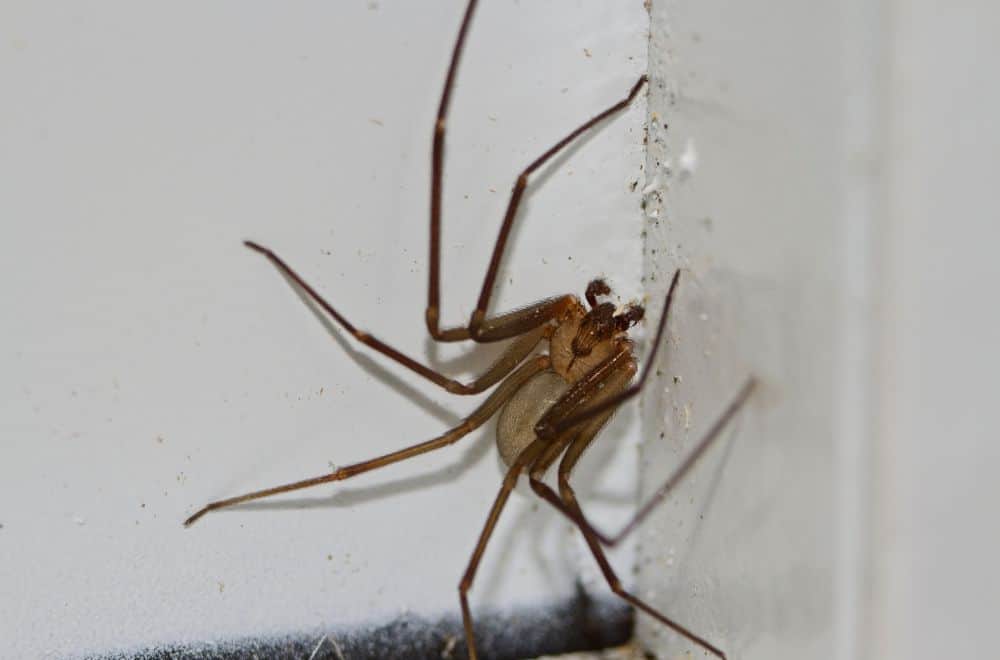
The brown recluse spider is an unpleasant species of spider to find in your home since it’s one of the few North American species capable of giving you a nasty and potentially dangerous bite.
These spiders grow to between 0.24 and 0.79 inches and sometimes bigger.
You can sometimes identify them by a distinctive marking on their back that looks like a violin, which is responsible for several of their common names, including fiddleback spider, brown fiddler, or violin spider. However, this marking is not always present.
If you look closely, you may also notice that they have only three pairs of eyes and not four, unlike most other species of spider.
Brown recluses are found in Nebraska, Iowa, Illinois, Indiana, Ohio, Texas, Georgia and Kentucky. However, contrary to popular belief, they are not present in California.
As their common name suggests, these spiders are brown and like to keep to themselves. However, they often enter homes and like to hide under furniture, in piles of clothes or even in shoes.
They are not an aggressive species, but when they are surprised, they will defend themselves by biting – and they are considered one of only three species in North America with medically significant venom (the other two being the black widow and the Chilean recluse).
Their venom is necrotic, which means it can cause the skin around the bite to die. Although rare, some fatalities have been caused by brown recluse bites, but deaths usually involve young children or those with compromised immune systems.
Most bites only result in soreness, mild nausea and itching around the bite. However, if you are bitten by one, you should monitor your reaction and seek medical help if you develop anything more serious than mild symptoms.
5. Cellar spider
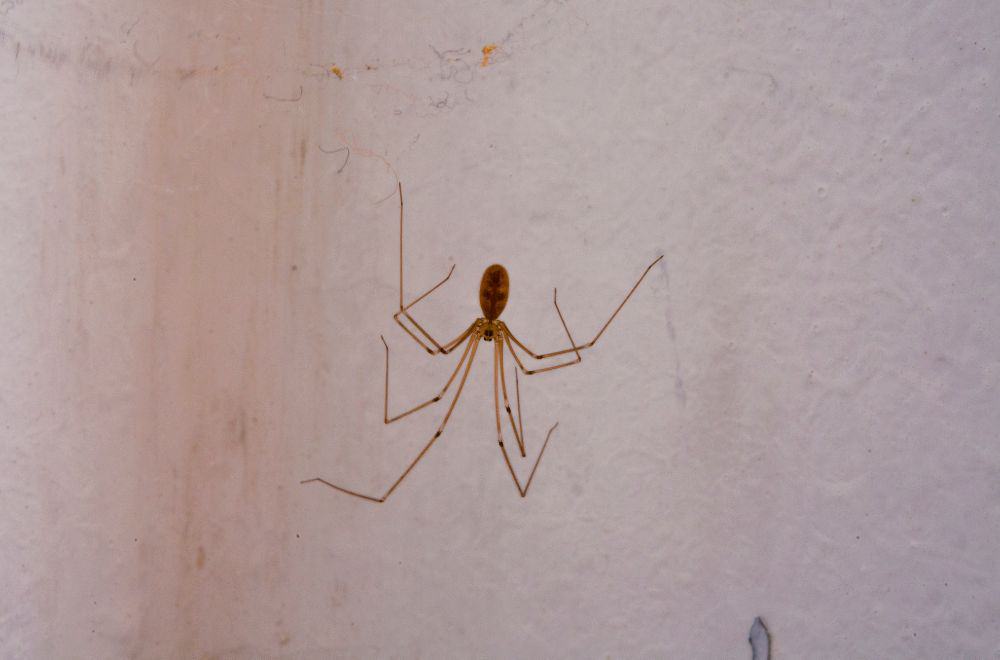
Cellar spiders are one of two entries on our list that are often referred to as “daddy longlegs”.
In fact, this family of spiders contains many species, and most people will be familiar with their appearance – they have small, globular bodies and long, spindly legs that are usually around four times longer than their bodies.
They like to live in dark, undisturbed places like cellars – hence their name – and will spin untidy webs for catching prey, giving areas like cellars or attics a characteristically neglected appearance.
According to an urban myth, daddy longlegs possess a powerful venom that would kill a human or even a horse, but they are unable to inject it since their fangs are too weak to pierce our skin.
However, there is no truth to this. Although, like most spiders, they do possess venom, it would be harmless to humans, even if they could bite us – which they can’t.
6. Harvestman
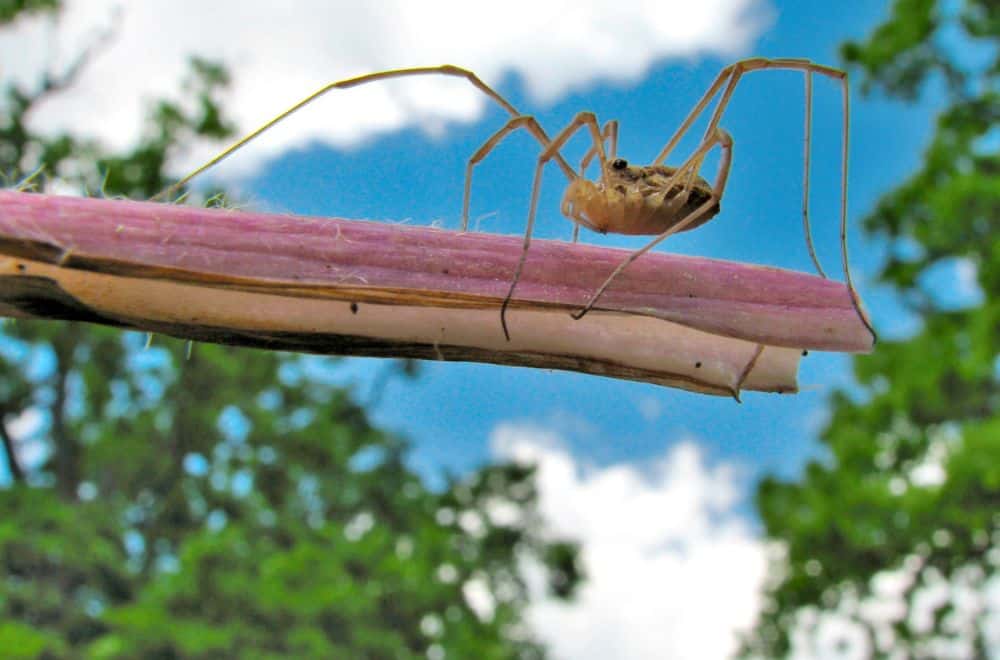
Also known as daddy longlegs, harvestmen are not true spiders. Rather, they are a type of arachnid related to spiders that can resemble cellar spiders to the untrained eye.
There are many species of harvestman, and unlike cellar spiders, they don’t spin webs. Instead, most species are omnivorous, eating whatever insects or organic matter they find.
The same urban myth about their powerful venom also applies to these creatures – but in this case, it is even more untrue since harvestman species don’t possess any venom at all.
7. Hobo spider
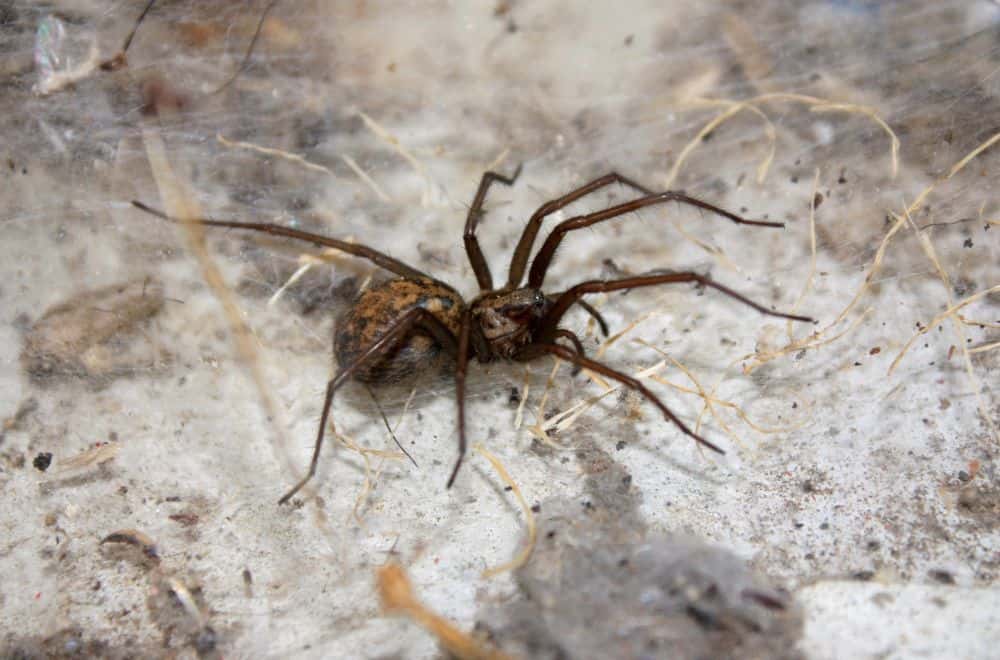
Hobo spiders are small brown spiders that can be from 0.28 to 0.55 inches in length. They belong to the family of so-called funnel web spiders that get their name from their habit of building funnel-shaped traps for their prey.
These spiders’ preferred habitat is in fields where they can construct their traps to hunt. They usually prefer to avoid human habitation due to the presence of other competitor species.
However, they can sometimes build their traps near or in human buildings, and like brown recluse spiders, they can sometimes be found in shoes or clothing.
When they are surprised and cornered, they may try to defend themselves by biting.
For a long time, it was believed that bites from hobo spiders could be dangerous to humans However, this is now considered incorrect, and it is possible that this idea came from misdiagnosed bites from other spiders in the past.
This means if you are bitten by one, you are likely to suffer some pain and discomfort, but this will disappear after 24 hours, and no further action other than alleviating the pain should be required.
8. Jumping spider
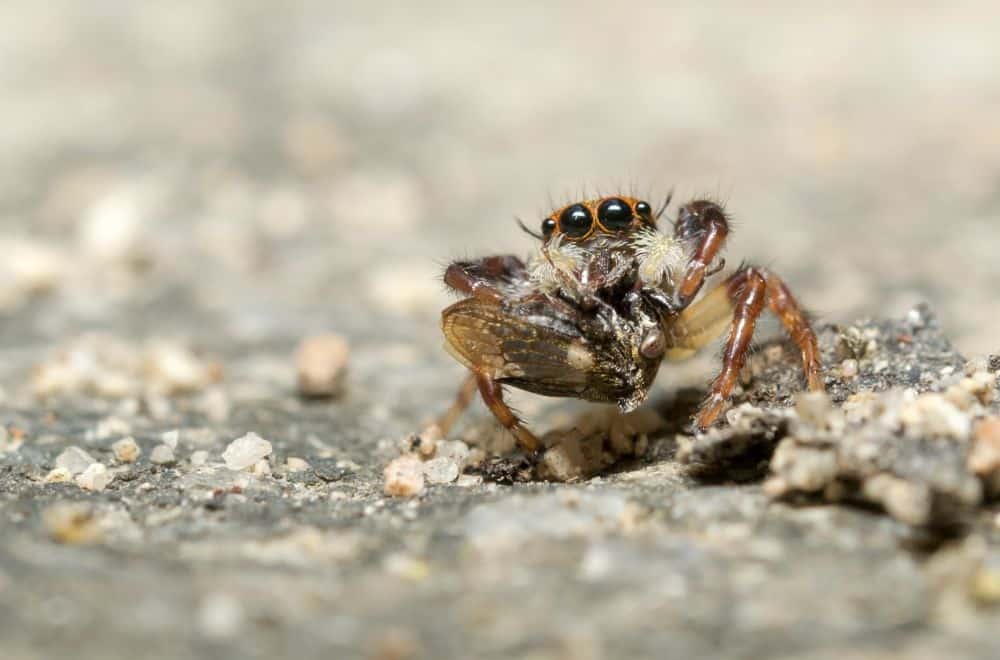
The family of jumping spiders contains at least 600 genera, and some of them may show up in your home.
Many species have excellent vision, and as their name suggests, many are also capable of performing impressive leaps into the air, either for hunting or to avoid danger.
Some jumping spiders are brown while others may be black or have stripes or other markings. A few species have red markings that can occasionally mean they are confused with black widows.
They also have a distinctively large pair of eyes at the front of their heads, and the various species range from 0.04 to 0.98 inches in length.
With their large eyes and hairy bodies, some jumping spiders may have an intimidating appearance. However, while they may sometimes bite in defense, their bites are not considered dangerous and, other than hurting a bit, are nothing to worry about.
9. Grass spider
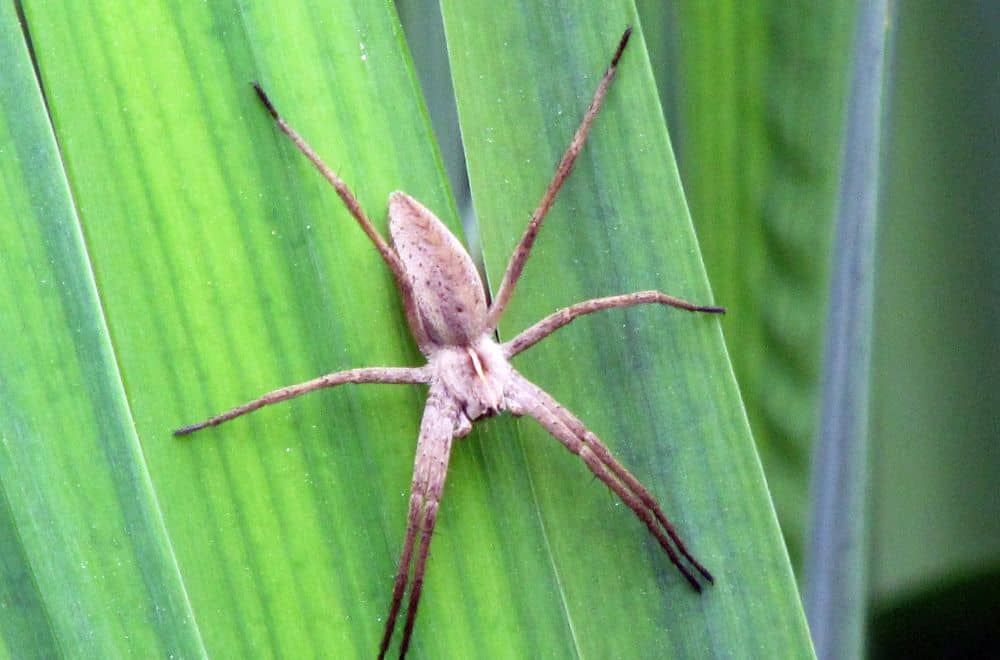
Grass spider is a common name for many types of largely unremarkable species of spiders that you may sometimes come across in your home.
Grass spiders include other species of funnel web spiders that are related to the hobo spider, and different members of this genus can be found throughout the United States.
Although some of them may be able to bite humans, they are considered practically harmless, and they won’t attack you or attempt to bite you except in extreme cases when they feel threatened and have no other option.
FAQs
Which species of spider are most dangerous?
In the United States, the most dangerous types of spider are the black widow species and the Chilean recluse, both of which can cause death on rare occasions.
On our list of brown spiders found in the house, the most dangerous is the brown recluse, although it is not as dangerous as either the black widow species or the Chilean recluse.
How can you control spider populations?
The best way to control spiders in your home is to sweep and vacuum regularly, removing webs whenever you see them appearing.
You should also keep your kitchen free of food since this will attract insects, which, in turn, draw in spiders.
You should also keep the area around your home clear of debris, regularly mowing the lawn, sweeping leaves and trimming bushes and shrubs. Keeping woodpiles away from your house can also help.
What should you do if you see a spider in your home?
If you see a spider in your home, you should first try to identify the species in case it belongs to one of the few species in North America that can be dangerous to humans.
If it isn’t, you can safely trap it and move it outside. But if it is dangerous, and you don’t feel confident dealing with it yourself, you may consider calling in a professional to help.
Usually nothing to worry about
Broadly speaking, spiders are nothing to worry about, and although their webs can be unwelcome, they can actually help keep other pests under control.
However, a few species are still capable of giving a nasty bite, and with our guide, now you should know how to spot them.
